During this time of global uncertainty and self-isolation, some of our frequent contributors share their top five “comfort movies” that help them get through troubling times. Peruse our list, revisit an old favorite, and perhaps even discover a new movie that may provide some solace. Share your favorite comfort movies with us @BigPicFilmMag.
Gabriel Solomons
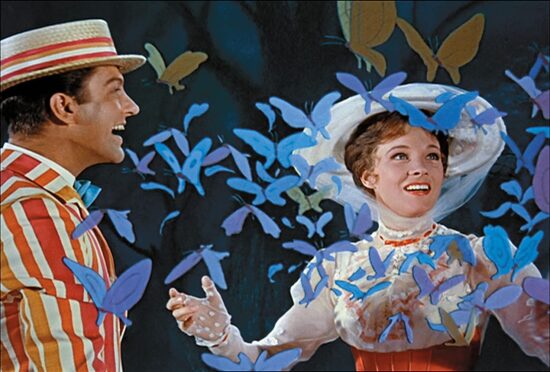
Mary Poppins (Robert Stevenson, 1964)
Pure escapism is our Mary Poppins, and damn handy round the house to boot.
Mary taught us to dream, to imagine and to laugh (just not too irresponsibly).
To do your best, but remember to have fun. To greet each new day with a smile and a determination to make the most of it, come what may.
What Mary managed to do with a spoonful of sugar and a bottomless handbag, a gazillion self-help books, blogs, apps and podcasts have attempted to emulate ever since.
With a spring in her step and a voice of angelic reason, Mary taught us the value of family and the importance of togetherness – which is a supercalifragilisticexpialidoc
Heat (Michael Mann, 1995)
At nearly three hours running time, this high-octane, LA set crime-caper – which follows Robert DeNiro’s master thief Neil McCauley and his gang as they execute a series of audacious heists while evading capture by Al Pacino’s tenacious cop Vincent Hanna – is just the ticket during these times of enforced isolation. Michael Mann is crap at portraying women, choosing to focus heavily on the trials and tribulations that beset his leading men. Taken at face value – and in his defence – it seems Mann is simply more interested in examining the complexities of masculinity and the unique male bonds which often develop between criminals, cops and rebels. At the heart of Heat and many other of Mann’s films, we find dual protagonists often battling it out across a moral divide. The point so often made in these films however is that there is far more that unites his leading men than divides them, and that the line separating those who choose a life of crime from those intent on preventing it is a very thin line indeed.
The Station Agent (Tom McCarthy, 2003)
Following the death of his friend and colleague, Finbar (Peter Dinklage) inherits, and moves into, an abandoned train depot to continue a life of solitude. A troubled older woman (Patricia Clarkson) and jolly food-truck vendor (Bobby Cannavale) slowly break down his defences and soon the three form an unconventional family unit – sharing stories of loss, love and the perfect ‘café con leche’.
One of the taglines for this film read: ‘Loneliness is much better when you have someone to share it with’ – which is an apt credo to live by in this time of Covid-19, when we crave each other’s company more than ever. Fundamentally this is a film about opening up. Opening up to new people, to new experiences and finally to the possibility of finding happiness again.
What could be more hopeful than that?
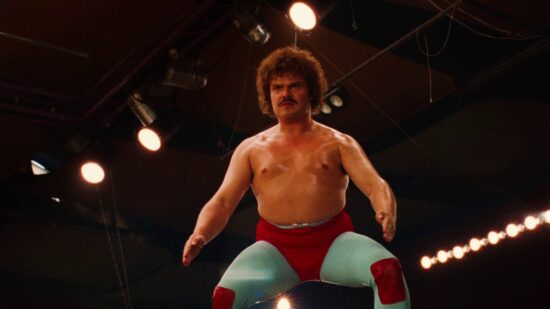
Nacho Libre (Jared Hess, 2006)
We all know Jack Black is a buffoon and have seen his familiar schtick of cartoonish expressions in numerous, mostly forgettable, films. In Nacho Libre however, director Jared Hess found the perfect character with which to harness all of Black’s outlandish tomfoolery.
Ignacio (Black) is a monastery cook with dreams far beyond the devout community’s confines, and so sets about becoming a luchador (Mexican Wrestler) with the help of reluctant sidekick Esqueleto. With dialogue seemingly penned by a couple of teenage stoners (‘Precious Father, why have you given me this desire to wrestle and then made me such a stinky warrior?’), what makes this such an under-rated comedy gem is its endearing charm – focussing on one man’s determined pursuit of self-actualisation, the capture of his lady-love’s heart and a desire to taste the thrill of glory. In stretchy pants.
The Great Beauty / La Grande Belleza (Paulo Sorrentino, 2013)
An ageing journalist, Pep Gambardella (Sorrentino stalwart Toni Servillo), reflects on a life possibly misspent, as he glides effortlessly (and stylishly) through the streets and social engagements of his beloved Rome. He is a man for whom popularity has come at the expense of dedication to his novel writing, and this regret is the needle that irritates his conscience. While we follow Jep’s conflicted internal monologue as it plays out among the vast array of colourful characters butting up against his search for self, it is the city of Rome which truly shines here – shot, lit and presented as if in a dream of first discovery.
The real Rome may currently be weeping like a shunted lover, but Sorrentino’s evocation celebrates the Emerald City’s eternal wonder like no other film since Fellini’s golden age.
Callum Reid
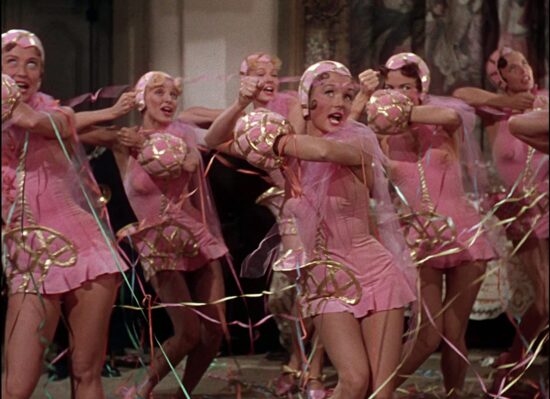
Singin’ in the Rain (Stanley Donen and Gene Kelly, 1952)
One of the greatest musicals, one of the great movies about movies, one of the great movies full stop, Singin’ never fails to get all the juices flowing and, while sodden in precipitation, unashamedly beams rays of sunlight into your life.
It works on every level, every way, any day – and no matter how often you’ve seen it – still contains surprises. I always forget in the early going how funny Kelly is in the increasingly dangerous stuntman skits, and laugh every time.
Note the apostrophe in the title – like Sinatra’s Songs for Swingin’ Lovers and Van Halen’s “Ain’t Talkin’ ’bout Love,” it just wouldn’t be the same without it.
The Bridge on the River Kwai (David Lean, 1957)
Quite simply, a “classic”. From the consistently involving and dramatic set up to the Alec Guinness versus Sessue Hayakawa battle of wills to every scene with William Holden (“you want me to go BACK?” “Jolly good show!”) and right up to the all-action, morally off kilter, “madness” finale, Kwai was one of those big Christmas films on telly back in the day that lived up to the hype (like some others, including, as I remember, Butch Cassidy And The Sundance Kid and/ or The Sting, it seemed to be trailered as the “Big Christmas Film” from around July or August).
This is a multi-Oscar winner, with some of the biggest stars of the day, and one of the most whistle-able theme tunes of all time, crafted by one of cinema’s greatest directors. But when I regularly comment that the office I (usually) work in is so bakingly hot “it’s like being in The Bridge On The River Kwai”, no one seems to know what I mean. Yes, you’re right, I’ve been there too long.
It’s a Mad Mad Mad Mad World (Stanley Kramer, 1963)
Comedy catnip for its cult followers but probably too much for many – the extended “road show” version available as a Criterion Blu-ray runs 197 minutes.
Yup, it’s a long, chaotic quest for the stash of cash, from Smiler Grogan (Jimmy Durante) kicking the bucket to the delayed revelation of “the big W” that marks the spot and beyond, but this is one movie that used to pass my old VHS roulette test – ie randomly wind forward, wind back, play wherever you are in the picture and you’ve struck pure gold. Anywhere near Jonathan Winters (“But this is a girl’s bike … this is for a little girl …”), or Dick Shawn (“Mama! Your baby’s coming to get you!”), or Paul Ford in the air traffic control tower (“what the HELL is with this wire!”), you really have landed lucky.
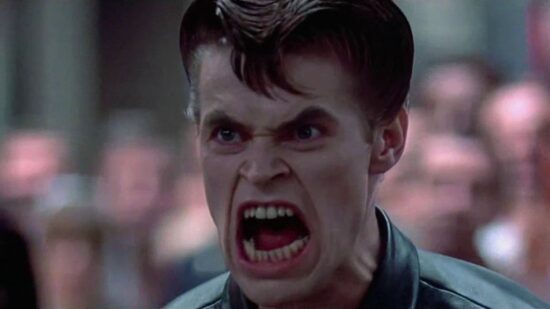
Streets of Fire (Walter Hill, 1984)
Dancing at times uncertainly to an admittedly odd musical mix of doo-wop and big-hair soft rock, Hill’s ambitious mash-up of time, place, fashion and soundtrack still delivers as a swooningly romantic, comic book-y tale of passionate kisses in the rain, power ballads worth fighting for and mano-a-mano jousting. The on-stage set-pieces stand out even if the numbers by Jim (Meatloaf) Steinman are so jam-packed with imagery and metaphor and tongue-in-cheek wordplay that there are almost TOO MANY LYRICS.
A young Diane Lane is raw and gorgeous, fist pumping and brow furrowing, while a young Willem Dafoe is gaunt, demonic and Nosferatu-pale. Michael Pare is the brooding hero in white vest, braces and duster.
White Chicks (Keenen Ivory Wayans, 2004)
Woody Allen in his autobiography Apropos Of Nothing contributes: “Sartre said, ‘Hell is other people.’ I would like to change that to ‘Hell is other people’s taste.’”
But there’s bad taste (John Waters) and there’s bad taste (George Lucas). The Wayans boys- Shawn and Marlon starring here – are too-keen kids you’d like to slap around the face but in the same motion place a soothing arm across their collective shoulders because you sense it’s simply not their fault – they don’t know any better.
Two FBI guys go undercover as the titular dimwit socialite kidnap targets and the rest, as they say, is history (“but so was the Holocaust” – Woody again). Somehow everyone falls for the elaborate make-up and prosthetics, distracted as they perhaps are by the incessant fart jokes, the “casual” approach to race-relation politics and the sheer Jerry Lewis-style comic silliness. Highlights include the all-girls-together drivetime singalong, a pre-Zahler Jennifer Carpenter’s self-immolating Shamu monologue, the epic dance-off and a sublime glow-sticks work-out by ex-NFL star Terry Crews.
Andrea Grunert
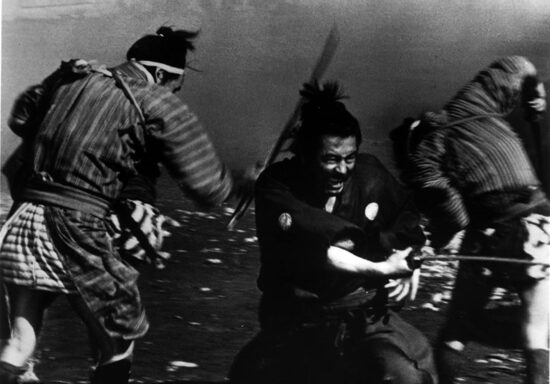
Yojimbo / Yojinbo (Akira Kurosawa, 1961)
Although I have watched Yojimbo many times, I am still always impressed by its multiple layers of meaning and its dynamism. Kurosawa’s film set in 19th century Japan is a critical exploration of post-war Japan, depicted as a corrupt society dominated by crime and violence. It deals with these very serious topics in a light-hearted way, admirably supported by verbal humour, image and sound, and by Masaru Sato’s score, inspired by Japanese and western elements and instruments. The music fits perfectly with the film’s elaborate mise-en-scene in which frequent deep focus allows great detail in the shots and low-key photography creates subtle light-shade contrasts. The central character, the masterless samurai played by Toshiro Mifune, controls the narrative, playing two rival merchants off against each other. Humour is generated by the contrast between the ideal of the samurai (and Mifune’s screen persona) and this egoistic but cool anti-hero who is endowed with superhuman qualities. As so often in his films, Mifune’s inventive acting enhances the other mise-en-scene aspects and is a crucial element in the film’s captivating rhythm.
The Wedding Ring / Kon’yaku yubiwa (Keisuke Kinoshita, 1950)
In post-war Japan, Ema (Toshiro Mifune) is a young doctor who falls in love with Noriko (Kinuyo Tanaka), a successful businesswoman whose husband (Jukichi Uno) is suffering from tuberculosis. Kinoshita’s subtle mise-en-scene avoids sentimentalism by keeping a delicate balance between romanticism and humour. When Ema, eager to show off his perfectly proportioned body and demonstrate to Noriko his masculine prowess, positions himself on a rock to plunge into the sea and then cannonballs into the water, the disparity between expectation and result creates a hilarious moment. Mifune continuously gives proof of his great versatility in a romantic role. The female figure is equally interesting, revealing her inner torment – torn between concern for her husband, frustration and desire. When she looks after Ema’s jacket, soaked with sweat, the viewer is invited to share her strong emotional turmoil. Kinoshita’s film about longing, compassion and conflicting feelings (including those of the husband, whose virility is undermined by his illness) is not only entertaining but also a complex study of human behaviour.
Once Upon a Dream / Nemuri-hime (Kei Shichiri, 2007/2016)
Kei Shichiri’s film is not an easy piece, transcending the narrative conventions we are used to. However, Once Upon a Dream is not a film the viewer quickly forgets either, and, on the contrary, it continues to work on the imagination. Human figures are scarcely ever on screen but are an absence-presence represented by body fragments, silhouettes and the voice-over, which is a mixture of interior monologue and dialogues. Objects and spaces of ordinary life and landscape views are accompanied by reflections on dreams and feelings that reveal fears and desires. Association and dissociation of image and (several layers of) sound create complex audio-visual structures which question anew the very nature of the image. This rich work on representation and perception is not only intellectually challenging but also a film that arouses strong emotions.
The Kiyosu Conference / Kiyosu kaigi (Koki Mitani, 2013)
After the death in 1582 of the first unifier of Japan, Nobunaga Oda, his main retainers are looking for a successor. The Kiyosu Conference is the fictitious story of their meetings at Kiyosu Castle in today’s eastern Aishi Prefecture. Mitani makes use of the historical event to take an amusing look into the corridors of power. The scheming and plotting characters from the 16th century are not that different from those we are familiar with today. Many of the scenes lend the film a comic touch. So do their actors – Koji Yakusho plays Katsuie Shibata as a country bumpkin, energetic and full of life, while Yo Oizumi’s Hideyoshi Hashiba is the born schemer – intelligent and ruthless.
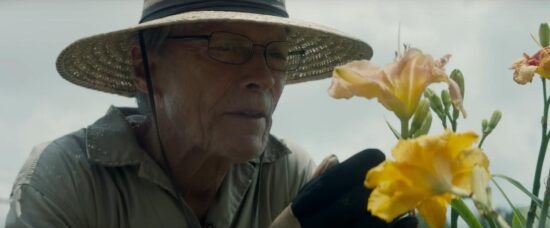
The Mule (Clint Eastwood, 2018)
The Mule is a well-measured mixture of lightness and depth. Presenting variations on the same situation (the delivery of drugs), it is never boring. The Mule deals with violence and deception, evolving towards its climax in a dynamic and elegant manner. It is a paean to non-conformism but makes no secret of the fact that solitude is the dark side of individualism. Once again, Eastwood toys with age, here playing a ninety-year-old man who enjoys having sex with women who could be his granddaughters. Eastwood as the charming hedonist – one has rarely seen him acting so much at ease and so full of joy.
